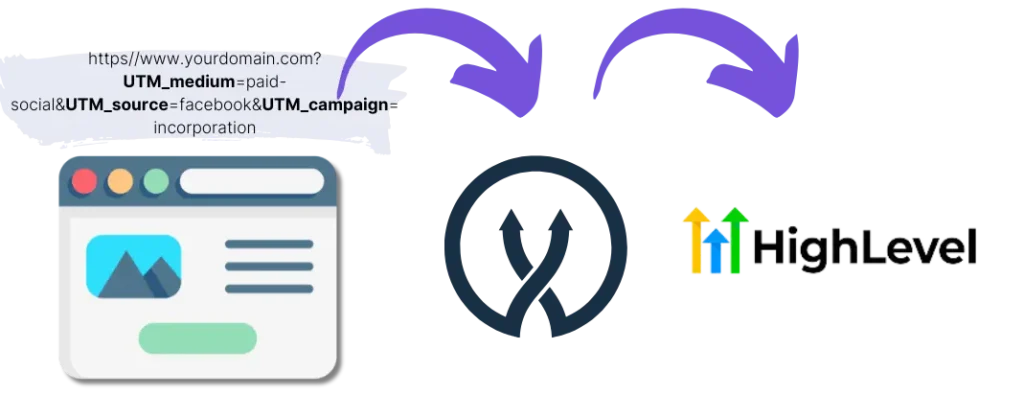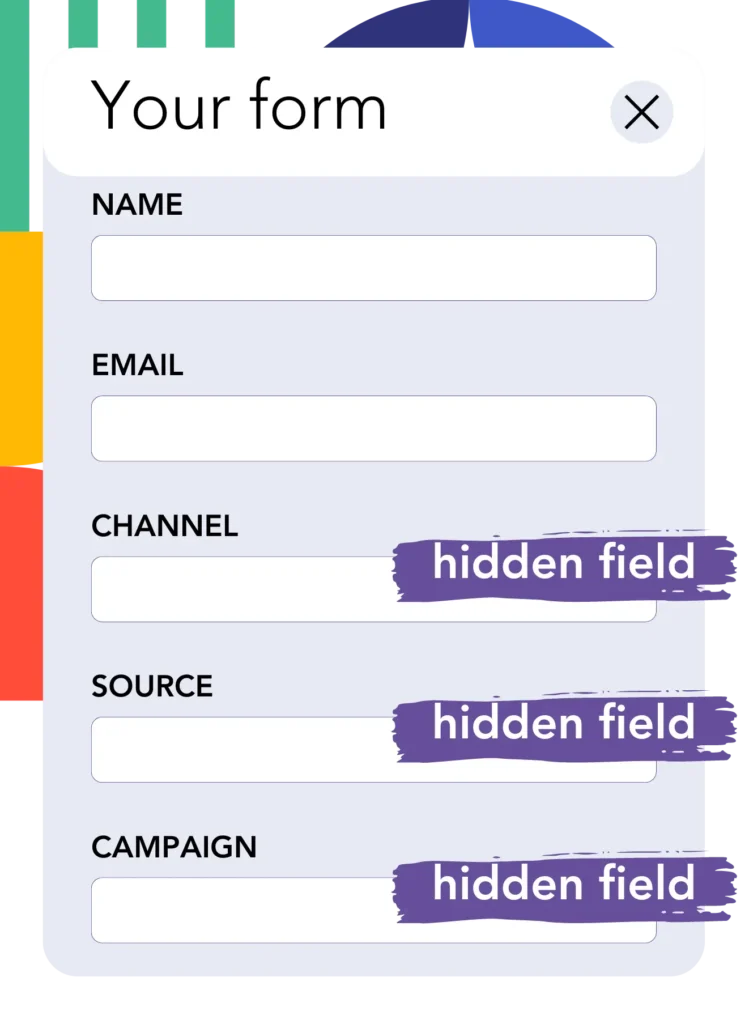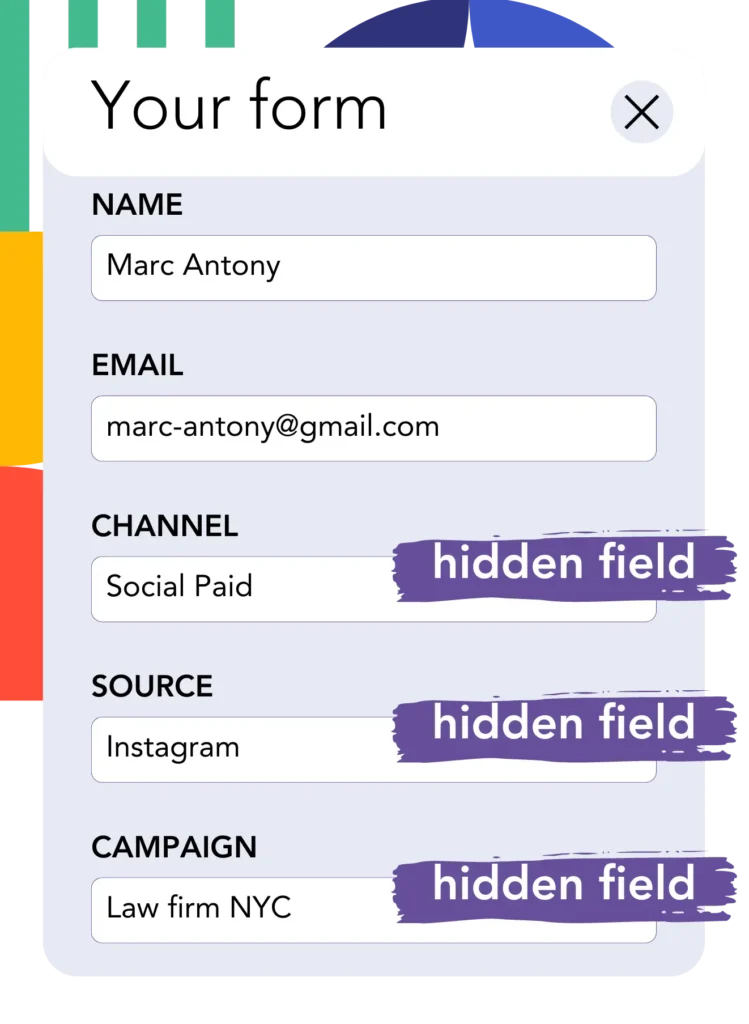Adding UTM tracking to GoHighLevel can be challenging, especially for those without coding skills.
What if there was a solution to easily capture UTM parameters in GoHighLevel, without using any code?
Discover Leadsources.io!
Leadsources is a lead source tracking tool that bridges the gap between your UTM parameters and GoHighLevel.

When a visitor clicks on your marketing campaign, Leadsources captures the UTM parameters in your URL.
Leadsources then automatically inserts these UTM parameters into the hidden fields of your GoHighLevel forms.
You can see the UTM parameters along with the lead’s information on the GoHighLevel submission page.
This guide provides a quick and easy way to set up UTM tracking in GoHighLevel with Leadsources in 10 minutes, with no coding skills necessary.
Implement GoHighLevel UTM tracking in 4 easy steps:
Step 1: Add Leadsources to the head tag of your website

Sign up for Leadsources.io and enjoy a 14-day free trial.
Insert the Leadsources code into your website’s head tag. No coding or developers are needed.
Simply follow this guide – it takes only 5 minutes.
Step 2: Add the UTM parameters to your campaigns

Add the UTM parameters you want to track in all your campaigns (PPC, email, social media, etc.).
Leadsources supports the following UTM parameters:
- UTM_source
- UTM_campaign
- UTM_term
- UTM_content
Leadsources also captures information not in UTM parameters, such as the channel, landing page, and landing page subfolder.
Step 3: Add hidden fields to your GoHighLevel form

When visitors fill out your GoHighLevel form, they provide personal data in the visible fields (name, email, etc.).
Meanwhile, Leadsources.io automatically inserts UTM parameters into the hidden fields of your GoHighLevel form (channel, source, etc.).
Add the hidden fields to your GoHighLevel form to store your UTM parameters.
Add Hidden Fields:
- In the form editor, look for the option to add fields.
- This is usually found on the right panel or in a toolbar.
- Select “Hidden Field” from the list of available field types.
Add the exact following fields one by one:
- channel
- source
- campaign
- term
- content
- landingpage
- landingpagesubfolder
Step 4: Track UTM parameters in GoHighLevel

When someone clicks on your campaign and visits your website, Leadsources captures the UTM parameters in your URL.
The visitor opens your GoHighLevel form and fills it out.
Leadsources inserts the UTM parameters into the hidden fields of your GoHighLevel form, which are not visible to the visitor.
Upon form submission, the UTM parameters and the form’s responses are submitted together.
How does Leadsources work?
By adding the Leadsources code to your website’s head tag, Leadsources reads and captures the UTM parameters in your URL every time someone visits your site.
It stores the UTM parameters in the hidden fields of your GoHighLevel form.
If a visitor arrives without clicking on a link with UTM parameters, Leadsources still captures data about the visitor using the referrer:
- Channel
- Source
- Campaign
- Landing page
- Landing page subfolder
In that way, you can track important lead source data even when UTM parameters are not used, such as:
- Google Search
- Instagram bio link
- Social media posts
While most tools only track lead sources using UTM parameters, Leadsources allows you to track leads from various sources:
- Organic Search
- Paid Search
- Organic Social
- Paid Social
- Referral
- Affiliate
- Display Advertising
- Direct Traffic
This ensures you collect clean lead source data in one place.
Pro tip:
LeadSources integrates with all the popular online form builders, including Cognito Forms, Gravity Forms, Jotform, Typeform, WPForms, and more. Check how to track the UTM parameters in any form builder.
How to run performance reports
With your lead source data captured in the hidden fields of your GoHighLevel form, you can run performance reports like:
- Leads per channel
- Revenue per channel
- Revenue per keyword
This helps you make informed decisions on your marketing spend.
We’ll go over the types of reports you can create and their various functionalities.
Lead performance reports
Generate reports showing the volume of leads by:
- Channel
- Source
- Campaign
- Landing page
- Landing page subfolder
Example #1
You run campaigns on different channels (SEO, PPC, emailing, etc.). Extract the data and create the report: “Leads by Channel”.

Example #2
Once you recognize which channel brings in the most leads (e.g., Google Ads), you can narrow down this channel to analyze lead numbers across different ad campaigns.

Example #3
After identifying the campaign that drives the most leads, you can investigate further by focusing on it and analyzing the keywords behind the lead generation.

Sales performance report
Knowing which ads and keywords drive the most leads is great, but do they add to your revenue?
By sending your submissions to the GoHighLevel CRM, you can generate similar reports by sales.
Example:
| Channels | Search Paid | Social Paid |
| Leads | 50 | 75 |
| Sales | 5 | 6 |
| Average order value | $150 | $100 |
| Revenue | $750 | $600 |
You ran ads on Google and Facebook and at first glance, Social Paid ads seemed to be more effective for lead generation according to the “Leads by Channel” report.
Although a further analysis revealed that Search Paid ads were generating more revenue from fewer leads, so you decided to boost the budget for Search Paid ads.
LeadSources tracks the source of each lead in GoHighLevel, whether they come from ads, organic search, social, email, etc. and syncs that data with each submission. See the full breakdown on the lead source in GoHighLevel page.
